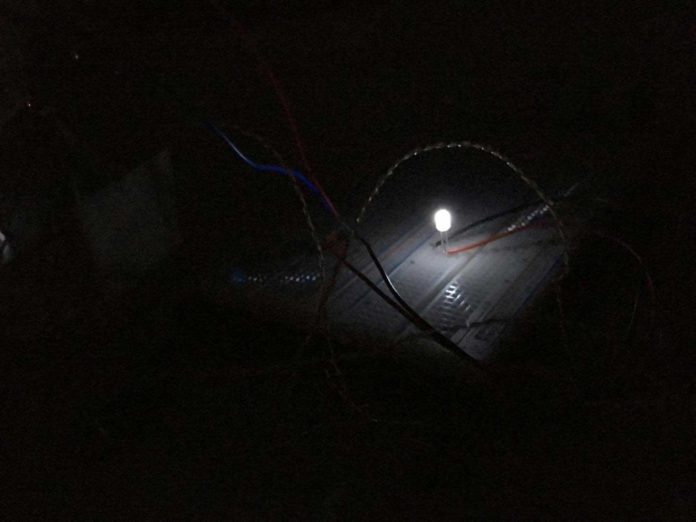While solar cells have enabled distributed power generation during the day, no comparable alternative exists at night. Scientists in a new study, have demonstrated a low-cost, modular mechanism of renewably generating meaningful amounts of electricity at night by harnessing the cold darkness of space.
Scientists have designed an inexpensive thermoelectric device that can harness the cold of space without active heat input. The device generates electricity enough to power an LED at night.
Lead author Aaswath Raman (@aaraman), an assistant professor of materials science and engineering at the University of California, Los Angeles said, “Remarkably, the device can generate electricity at night when solar cells don’t work. Beyond lighting, we believe this could be a broadly enabling approach to power generation suitable for remote locations, and anywhere where power generation at night is needed.”

CREDIT
Aaswath Raman
Raman in collaboration with Stanford University scientists Wei Li and Shanhui Fan developed this device by considering the limitations of solar power by taking advantage of radiative cooling, in which a sky-facing surface passes its heat to the atmosphere as thermal radiation, losing some heat to space and reaching a cooler temperature than the surrounding air.
This phenomenon clarifies how frost forms on the grass during above-freezing nights, and a similar rule can be utilized to generate electricity, harnessing temperature differences to deliver sustainable power during the night, when lighting demand peaks.
The device composed of a polystyrene enclosure covered in aluminized mylar to minimize thermal radiation and protected by an infrared-transparent wind cover, sat on a table one meter above roof level, drawing heat from the surrounding air and releasing it into the night sky through a simple black emitter.
Connecting the module to a voltage boost convertor and a white LED, the device can passively power the light. Fascinatingly, the device can produce as much as 25 milliwatts of energy per square meter.
Due to the amount of electricity it produces is relatively small, it can’t be used for widespread applications for now. However, scientists have predicted that the device can be made twenty times more potent with improved engineering–such as by suppressing heat gain in the radiative cooling component to increase heat-exchange efficiency–and operation in a hotter, drier climate.
Lead author Aaswath Raman said, “Our work highlights the many remaining opportunities for energy by taking advantage of the cold of outer space as a renewable energy resource. We think this forms the basis of complementary technology to solar. While the power output will always be substantially lower, it can operate at hours when solar cells cannot.”
The study is reported in in the journal Joule.
